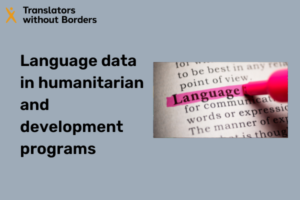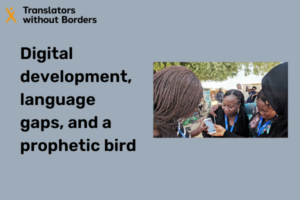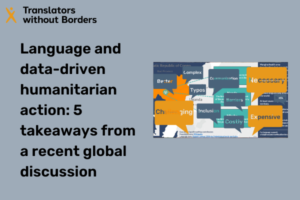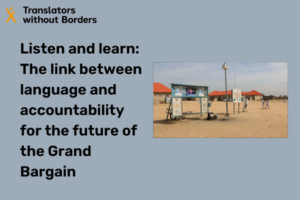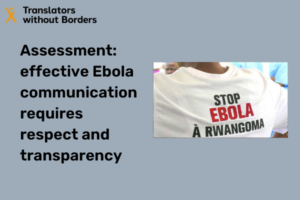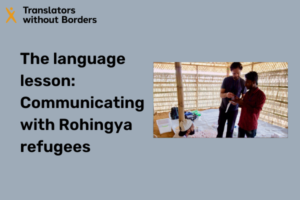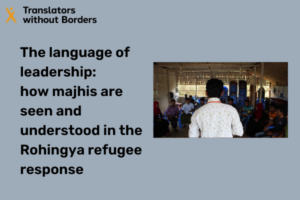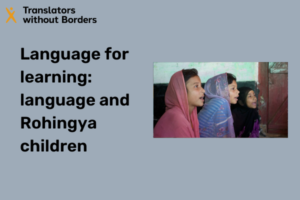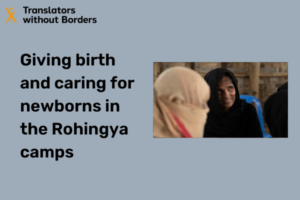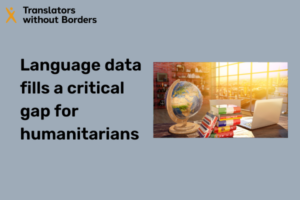
Five easy steps to integrate language data into humanitarian and development programs
Learn how to best incorporate language data into humanitarian and development programs for more effective community communication.
Digital development, language gaps, and a prophetic bird
Language and data-driven humanitarian action: 5 takeaways from a recent global discussion
Listen and learn: The link between language and accountability for the future of the Grand Bargain
Assessment: effective Ebola communication requires respect and transparency
In the second year of the current Ebola outbreak response in the Democratic Republic of Congo (DRC), people at risk still don’t have clear answers to their questions about the disease in a language they understand. Many local health communicators are themselves confused about the disease prevention and treatment measures they promote. The language, content, […]
Missing the mark? People in Eastern DRC need information on Ebola in a language they understand
People at risk of contracting Ebola need information to keep themselves and their families safe. Information they don’t understand will not help them. They need clear communication in plain, localized language, in a format they understand, and through channels they trust. To learn how to better communicate, TWB conducted the rapid language needs assessment in […]
The language lesson: What we’ve learned about communicating with Rohingya refugees
Rohingya refugees have a right to information and two-way communication in their own language, in a format they understand, and through channels they prefer and trust. In the past year, access to information has improved in the Rohingya refugee response as a result of an increased humanitarian focus on communicating with communities. Yet language barriers […]
The language of leadership: The words that define how majhis are seen and understood in the Rohingya refugee response
Language for learning: How language use affects Rohingya children’s educational experience in Cox’s Bazar
This report examines how language use affects Rohingya refugee children’s educational experience in the camps around Cox’s Bazar in Bangladesh. We identified four key factors that influence how Rohingya refugee children receive an education: Government requirements: The Government of Bangladesh imposes certain requirements on education service providers. The complex linguistic environment: The multilingual nature of […]
Signage language: helping Rohingya refugees find their way
Giving birth and caring for newborns in the Rohingya camps
- « Previous Page
- 1
- …
- 3
- 4
- 5
- 6
- 7
- …
- 15
- Next Page »
